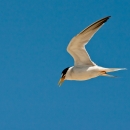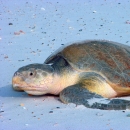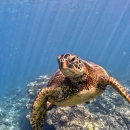The Gulf of Mexico watershed is at the heart of our nation’s outdoor legacy, where 40% of all North American migrating waterfowl and shorebirds use the Mississippi Flyway. The Gulf Coast, from Texas to Florida, is also home to more than 130 federally protected species, most of which are endangered. Restoring this vital area will ensure America continues to thrive well into and beyond the 21st century
The Gulf of Mexico’s coastal zone and its interior watershed contain the most productive aquatic and wetland habitats in North America. These aquatic habitats include a complex array of marshes, swamps, rivers, seagrass beds and open-water habitats that are critically important to meet the life cycle requirements of many fish and wildlife species that reside, winter or migrate throughout the Gulf watershed.





